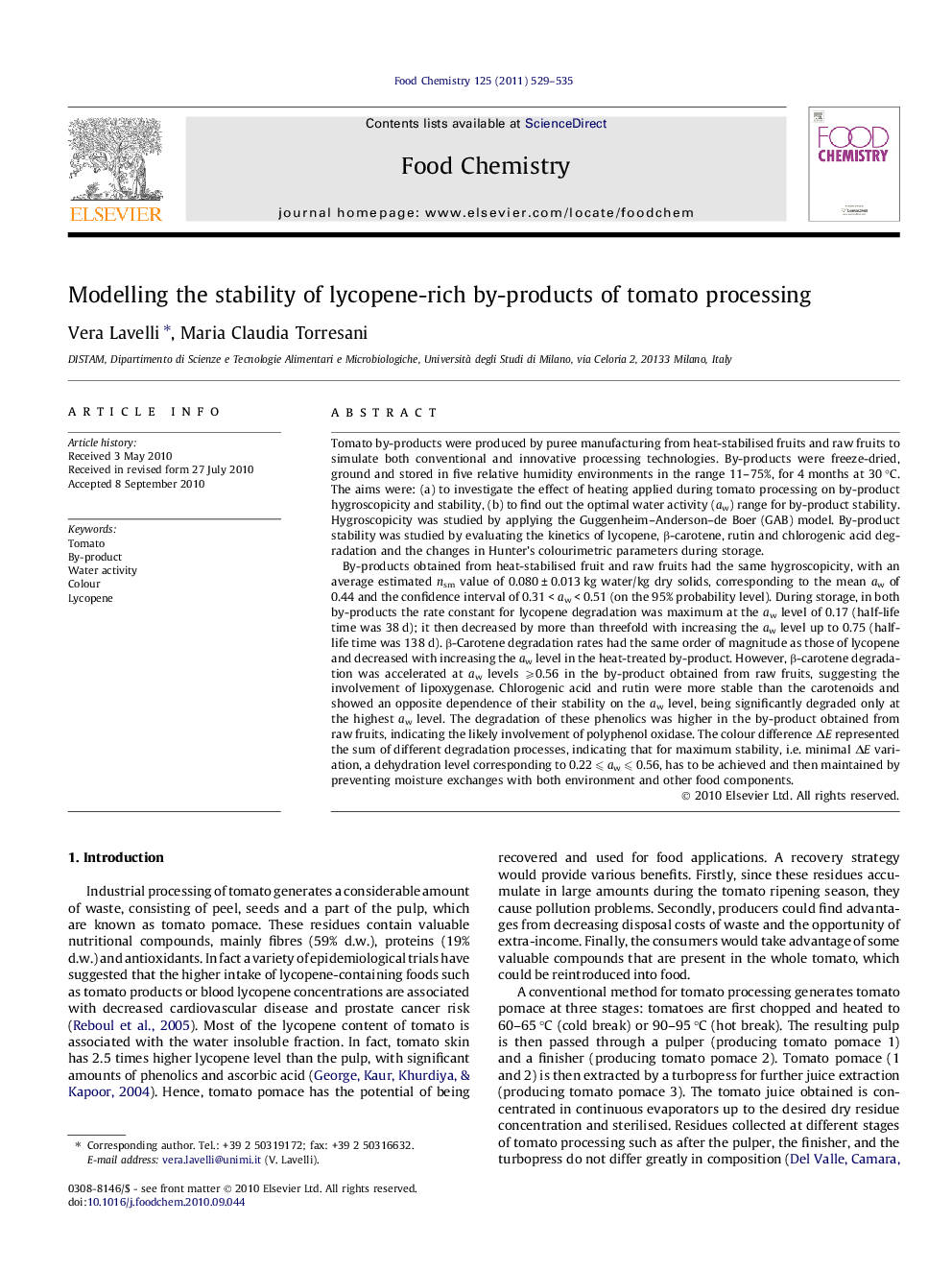| کد مقاله | کد نشریه | سال انتشار | مقاله انگلیسی | نسخه تمام متن |
|---|---|---|---|---|
| 1189420 | 963511 | 2011 | 7 صفحه PDF | دانلود رایگان |

Tomato by-products were produced by puree manufacturing from heat-stabilised fruits and raw fruits to simulate both conventional and innovative processing technologies. By-products were freeze-dried, ground and stored in five relative humidity environments in the range 11–75%, for 4 months at 30 °C. The aims were: (a) to investigate the effect of heating applied during tomato processing on by-product hygroscopicity and stability, (b) to find out the optimal water activity (aw) range for by-product stability. Hygroscopicity was studied by applying the Guggenheim–Anderson–de Boer (GAB) model. By-product stability was studied by evaluating the kinetics of lycopene, β-carotene, rutin and chlorogenic acid degradation and the changes in Hunter’s colourimetric parameters during storage.By-products obtained from heat-stabilised fruit and raw fruits had the same hygroscopicity, with an average estimated nsm value of 0.080 ± 0.013 kg water/kg dry solids, corresponding to the mean aw of 0.44 and the confidence interval of 0.31 < aw < 0.51 (on the 95% probability level). During storage, in both by-products the rate constant for lycopene degradation was maximum at the aw level of 0.17 (half-life time was 38 d); it then decreased by more than threefold with increasing the aw level up to 0.75 (half-life time was 138 d). β-Carotene degradation rates had the same order of magnitude as those of lycopene and decreased with increasing the aw level in the heat-treated by-product. However, β-carotene degradation was accelerated at aw levels ⩾0.56 in the by-product obtained from raw fruits, suggesting the involvement of lipoxygenase. Chlorogenic acid and rutin were more stable than the carotenoids and showed an opposite dependence of their stability on the aw level, being significantly degraded only at the highest aw level. The degradation of these phenolics was higher in the by-product obtained from raw fruits, indicating the likely involvement of polyphenol oxidase. The colour difference ΔE represented the sum of different degradation processes, indicating that for maximum stability, i.e. minimal ΔE variation, a dehydration level corresponding to 0.22 ⩽ aw ⩽ 0.56, has to be achieved and then maintained by preventing moisture exchanges with both environment and other food components.
Journal: Food Chemistry - Volume 125, Issue 2, 15 March 2011, Pages 529–535